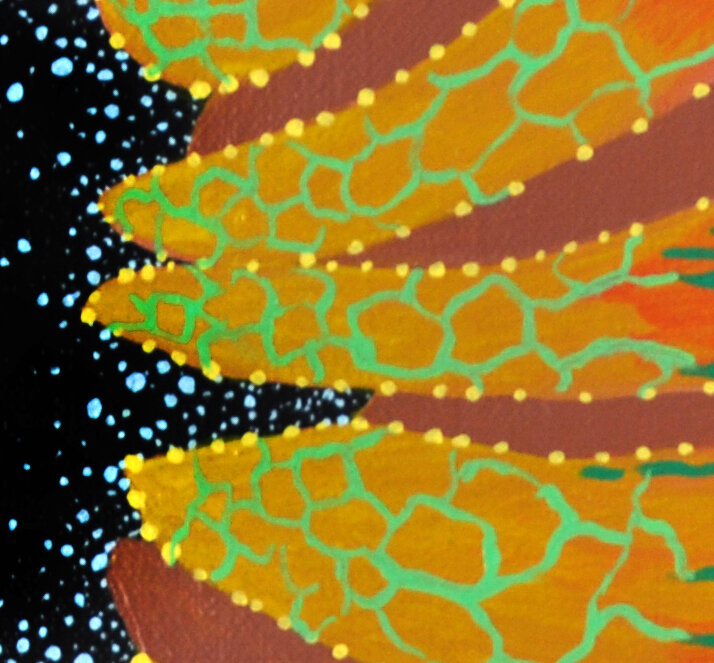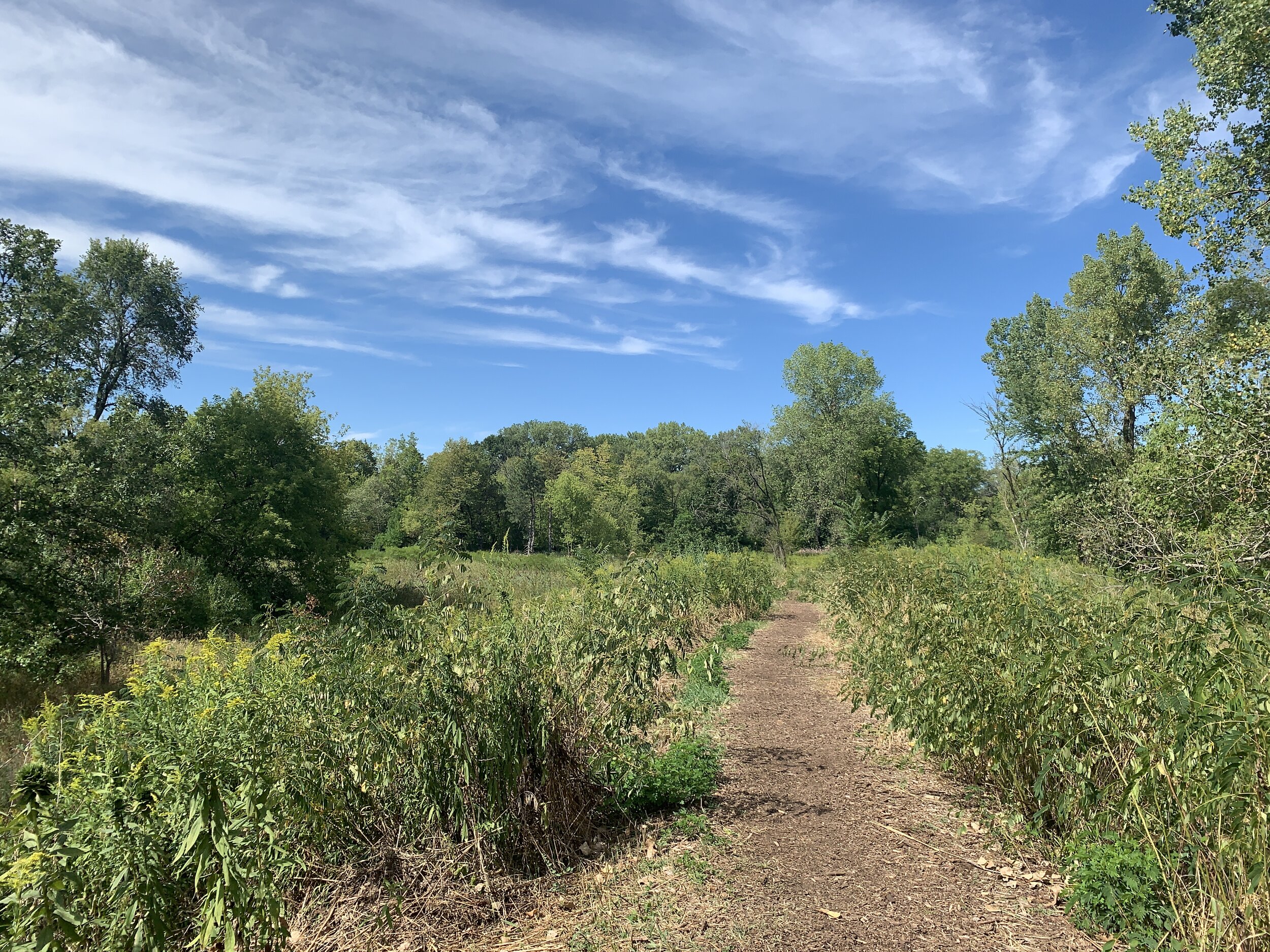I wanted to describe the reasoning for how and why I choose the colors in my paintings. It’s a very exciting and complex subject and one that I am very passionate about as a painter. I often work with highly saturated colors and many of the details work uses various values within each color. I have preferences for jewel tones and there is usually an abundance of deep blues in my work. Working with these colors brings the most energy, joy, and wonder to my painting process. There are color similarities and color stories for each series of work that I create.
While my work sources nature, I don’t use many neutrals or what most would consider natural colors of brown, green, and beige. However, the colors I use are selections from unseen nature. For example, images taken with microscopes or telescopes are often altered with staining or embellishing. This practice enables the viewer to see and experience the images more clearly. When selecting my color palette, I have these same ideas in mind. Microscopic image alteration is not really standardized so you will see a lot of variation when comparing different source images of the same subject. The microscope, camera, and even a printer produce a lot of variations of the same subject. I often have scientific images around me in the studio while I’m working. Since I’m doing so much inventing with shape, I really take a lot of liberty with color to use my own voice within the subject.
Color is a way to adding my own content and emotion that is personal, poetic, and compelling. The colors create candy colored vivid environments and fantastical dreamy elements that demand attention. The colors do not sit idly by. I think of the colors create centerpieces or focal points. In visiting a garden or going on a walk, I am often drawn to the brightest flowers as they have a tendency to bring attention to themselves and delight my senses. I select the colors in my palette in the same way as I experience color in nature. Colorful flowers standout and have contrast from fields of green grass that they grow out of. I’m drawn to the beauty in color but it’s also all of the magnificent variations that are possible. Color can convey emotions in how the light subtly changes while watching a sunset. Careful observations gives opportunities to slow down and appreciate what is around us.














